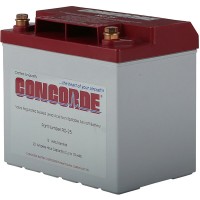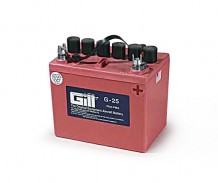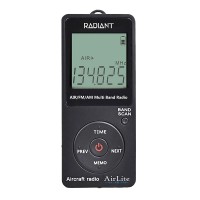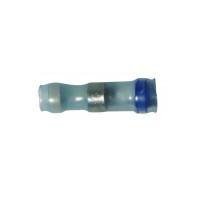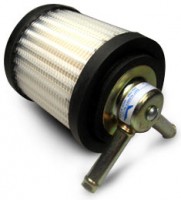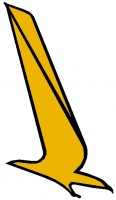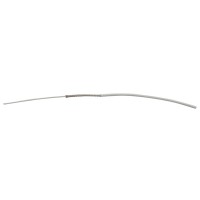ASA Aviation High School Facilitator Guide
Overview
|
Teach Science, Technology, Engineering, and Math through an exciting introduction to the aviation industry.
This Aviation High School Facilitator Guide and corresponding interactive Student Notebook address a growing need for solid instruction, inquiry, and development of future-ready competencies and interest in aviation at the high school level. This guide delivers the resources for high school teachers to utilize science, technology, engineering, and math (STEM) instruction to provide an excellent introduction to aviation. The content promotes aviation as an innovative field and includes exploration of aviation as an industry, the study of the fundamentals of flight, and an introduction to the diverse career opportunities available within the industry. The Facilitator Guide and accompanying online Instructor Resources include plans for research-based teaching of technical information, standards-based activities, assessments, and resources all designed to engage students’ different learning styles. Lessons are designed to be taught independently within any subject (science, technology, engineering, math, history, language arts) or used as a comprehensive aviation-themed curriculum for grades 9–12. The lesson plans incorporate engaging and interactive activities, including recommendations for using small unmanned aircraft systems (drones) and flight simulators to demonstrate and reinforce aeronautical knowledge and key flight concepts.
|
WARNING: Cancer and Reproductive Harm - www.P65Warnings.ca.gov. |
Author Details
Brittany D. Hagen, PhD, is an Associate Professor of Education and CAEP accreditation coordinator at Mayville State University. She earned her Bachelor of Science in Education at Mayville State University, majoring in Elementary Education with a minor in Educational Technology. Dr. Hagen earned a Master of Science in Elementary Education and a Doctorate of Philosophy in Teaching and Learning, both from the University of North Dakota. Dr. Hagen teaches courses on education methods, educational technology, and educational assessment. Additionally, she has developed both online and classroom curriculums for a variety of age groups, including teachthe-teacher programs and assessment data modules. Her research has focused on teacher preparation programs, reading curriculum, effective delivery and assessments, instructional design and techniques, as well as how adults can engage with children to further their educational goals.Sarah K. Anderson is a Senior Lecturer in Education at the University of Glasgow in Scotland. Sarah has a PhD in Teacher Education with a cognate in Educational Leadership from the University of North Dakota, USA, in addition to a master’s degree in special education and an undergraduate degree in teaching secondary level social sciences. Sarah is a Fulbright Scholar to Norway (2011–2012). From 2012–2020, Sarah worked at Mayville State University in the role of associate professor and accreditation coordinator. As a teacher educator, she has instructed graduate and undergraduate pedagogical courses at the secondary level, taught courses in special education, advised capstone portfolios, and supervised clinical experiences. Her research interests include teacher appraisal for continual improvement, progress monitoring for response to intervention, high-impact practices, and effective instructional strategies.
Leslie Martin is an Associate Professor for the John D. Odegard School of Aerospace Sciences at the University of North Dakota in Grand Forks, North Dakota. She holds a Bachelor of Science in Aeronautics Commercial Aviation and a Master of Science in Education. Professor Martin teaches a wide variety of courses from Private Pilot to Certified Instrument Flight Instructor ground school and is a flight instructor and check pilot for UND Flight Operations. She also works part-time at the Grand Forks Public School District teaching a high school course titled Aviation Technology I to high school sophomores, juniors, and seniors. Professor Martin’s research interests include Automatic Dependent Surveillance–Broadcast, weather technology in the cockpit, and unmanned aircraft systems (UAS).
Paul Snyder is an Assistant Professor for the John D. Odegard School of Aerospace Sciences at the University of North Dakota. Professor Snyder continues to be active in flight operations as an FAA Designated Pilot and Instructor Examiner, Insitu Certified ScanEagle UAS pilot, and a UND Chief Flight Instructor. As a DOT certified SMS trainer, Professor Snyder is an active member of UND Executive SMS committee and Events Review Team (ERT); analyzing flight data and conducting safety risk assessments to reduce risk within the organization. Professor Snyder has been a lead on working with the FAA to establish Level 3 SMS acceptance of UND’s Part 141 Pilot School and Part 145 Maintenance Repair Station under the FAA Pilot Study Program. Professor Snyder also actively teaches Safety Management Systems (SMS) and advanced flight courses and training seminars for the University of North Dakota. Past research activities include FAA Industry Training Standards (FITS) – Scenario Based Training, UAS curriculum design, and helicopter approach and landing lighting systems. Professor Snyder holds a degree in Aeronautical Studies and Master of Science in Educational Leadership.
Specifications
- Page Count: 408
- Illustrations: Black and white
- ISBN Number: 978-1-61954-937-1
- Dimensions: 8.25 x 10.75 inches
- Copyright: © 2021-2024 Aviation Supplies & Academics, Inc. All rights reserved.
- Date Published: 2021
- Prop 65 Warning: Cancer and Reproductive Harm www.P65.Warnings.ca.gov
- Search: True
- eBundle / eBook
- ASA eBooks are for one person's use and can be read on up to five devices total using e-reader applications that are compatible with an Adobe ID. To read eBooks on more than one device, the e-reader applications on those devices must be authorized with your Adobe ID.
- To create an Adobe ID, or to recover lost or forgotten ID information like your login or password, (Click Here)
Version Types
eBook PD - A protected document that looks identical to its print book counterpart. Exact formatting and layout of the print books is maintained (text, images, margins, page breaks, etc.). Displays best on 10-inch or larger screens. Not recommended for small screens (phones) which require you to zoom in and pan around to see the full page. This document is not a .pdf file type. It is a .acsm file type. See http://asa2fly.com/use-ebooks for more details on how to setup your device.
Softcover Book - Printed book with heavyweight cover stock.
eBook EB - A protected document designed for reflowable content. Also referred to as an ePub or "Electronic Publication" format. Easily viewed on both small and large screens. Text, images, and pages will adapt or reflow to fit the screen size of the device, so zooming is not necessary to read. Text size can be adjusted in an ebook reader app. Visit http://asa2fly.com/use-ebooks for more details on how to setup your device.
eBundle - Includes both the print book and eBook PD.
Documents
Q&A
Please note, Aircraft Spruce's personnel are not certified aircraft mechanics and can only provide general support and ideas, which should not be relied upon or implemented in lieu of consulting an A&P or other qualified technician. Aircraft Spruce assumes no responsibility or liability for any issue or problem which may arise from any repair, modification or other work done from this knowledge base. Any product eligibility information provided here is based on general application guides and we recommend always referring to your specific aircraft parts manual, the parts manufacturer or consulting with a qualified mechanic.








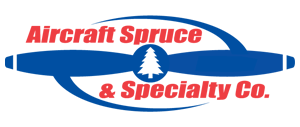 FREE Shipping
FREE Shipping



